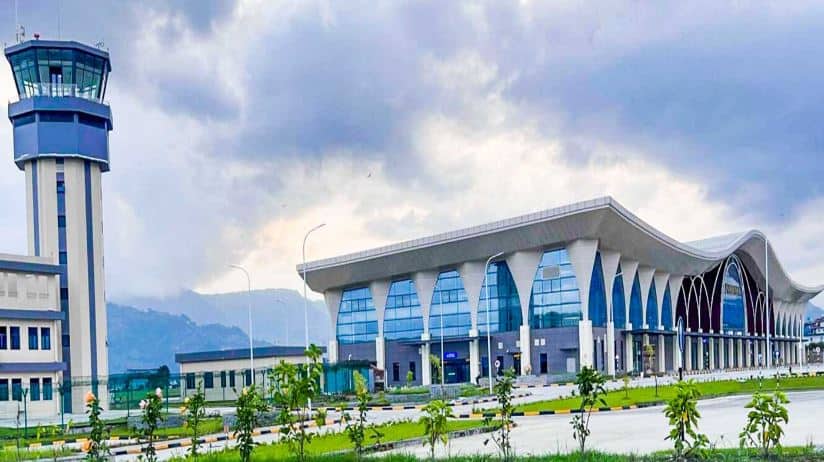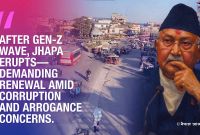Postmortem of the Chaos, Complications, and Controversies Surrounding Pokhara, Gautam Buddha, and Nijgadh International Airports

Nepal’s aviation sector, crucial for the country’s connectivity and economic growth, is widely recognized as plagued by disputes, technical challenges, and financial mismanagement. The construction and operation of the Pokhara Regional International Airport, Gautam Buddha International Airport, and the proposed Nijgadh International Airport have sparked significant debate, raising questions about their feasibility, strategic planning, and long-term impact on the nation.
Despite Nepal’s rich cultural heritage and majestic Himalayas, the country faces numerous obstacles in expanding its aviation infrastructure to boost tourism and economic growth. The development of Gautam Buddha International Airport (GBIA), Pokhara Regional International Airport (PIA), and the proposed Nijgadh International Airport reflects these challenges. The ongoing issues indicate that Nepal’s aviation sector is at risk of being wiped out from aviation history. The government’s recent efforts to address these concerns highlight the need for a serious discussion on the future of Nepal’s aviation industry.
Gautam Buddha International Airport: A Costly Endeavor with Uncertain Returns
The Gautam Buddha International Airport (GBIA), located in Bhairahawa, was envisioned as the gateway to Lumbini, the birthplace of Gautam Buddha, with the potential to attract millions of Buddhist pilgrims and international tourists. Officially inaugurated on May 16, 2022, the airport was constructed with a total investment of around USD 76 million, funded by the Asian Development Bank (ADB), the OPEC Fund for International Development, and the Government of Nepal.
Despite significant investment, the airport has struggled to attract international airlines. Initially, only Jazeera Airways operated three flights per week, a negligible amount compared to the airport’s expected capacity.
The lack of interest from other airlines, due to high operating costs, has turned GBIA into a headache for the state. It has now become apparent that a feasibility study was not conducted before construction, aside from the debt burden from the loans used for construction.
Attempts have been made to establish a false narrative to hide the shortcomings of the construction. It is often claimed that the airport is not operational due to India's refusal to grant routes. However, the truth is different.
The Instrument Landing System (ILS), crucial for safe landings during adverse weather conditions, has been installed and is operational. However, according to aviation rules, it can only be used after Nepal’s Aeronautical Information Publication (AIP) is updated. Despite this, some so-called experts are trying to establish the false notion that India objected to its use, which is why the AIP and permission have not been granted. India has not objected to the ILS operation. Senior officials in Delhi recently clarified that the spread of such misinformation is incorrect. They expressed concerns about Nepal’s political leadership's insensitivity regarding India's security interests involving airspace, land, and water.
In response, Prime Minister KP Sharma Oli recently convened a high-level meeting, urging authorities to create an environment to attract international airlines to both GBIA and Pokhara International Airport (PIA). The Prime Minister emphasized the need for effective planning to maximize the potential of the airport to alleviate the pressure on Kathmandu’s Tribhuvan International Airport (TIA), which is currently operating beyond its capacity.
Instead of blaming India for political gain, efforts should be made to find a solution regarding Bhairahawa Airport. Why weren’t India’s security concerns considered at the initial stage of airport construction? Why did Jazeera Airways stop its flights to Bhairahawa? Why are we trying to establish a false narrative without convening any official meetings with India to find a joint solution? Why are we indulging in blame games for cheap publicity instead of seeking sustainable solutions? Why are we so disillusioned in finding a sustainable solution?
Pokhara Regional International Airport: A Grand Construction or a White Elephant?
The Pokhara Regional International Airport was constructed to promote tourism in the scenic city of Pokhara, close to the Annapurna mountain range. However, the project, built with a loan from China’s Exim Bank and constructed by the state-owned Chinese contractor CAMC, has become embroiled in controversy due to financial irregularities and technical flaws.
Initially budgeted at NPR 22 billion, the project’s cost escalated to NPR 25.34 billion, raising concerns. The case is now under serious investigation by the Commission for the Investigation of Abuse of Authority (CIAA) and a committee formed by the Federal Parliament.
The airport’s design and construction have been criticized for making it impossible for international airlines to operate profitably, as the maximum load capacity for narrow-body aircraft is limited to 80–85 passengers. As a result, regular international flights have not commenced since the completion of Pokhara International Airport (PIA), aside from a few charter flights.
The design and construction flaws of Pokhara Airport have made it difficult for international airlines to operate profitably. As a result, international airlines are hesitant to operate flights to Pokhara Airport. Nepal is now bearing the burden of a large loan taken from China at a high-interest rate. The airport’s operations have not started, and the possibility of international airlines starting flights is low.
The load penalty suggests that the decision to build an international airport in Pokhara may have been a significant mistake. This has raised suspicions that the airport may be part of China’s broader strategy to trap Nepal in a debt trap. Despite these concerns, those who often raise voices on other issues remain silent to maintain relations with China.
The CIAA and the Office of the Auditor General have expressed concerns about potential negligence in implementing the Pokhara Airport project. The CIAA’s investigation has uncovered financial irregularities, such as unauthorized exemptions from customs duties, taxes, and VAT, which have contributed to the project’s escalating costs.
Technical errors in the airport’s design, such as improper soil disposal and height adjustments to the runway, have also been identified, posing significant safety risks. Issues like terminal leaks and incomplete infrastructure have further highlighted the systemic failures in the project’s implementation. These shortcomings have raised doubts about the project’s viability and increased concerns about the airport’s long-term sustainability.
The Auditor General’s report has consistently highlighted these issues, emphasizing the need for transparency and accountability in managing large infrastructure projects. In response, the House of Representatives’ Public Accounts Committee has directed the formation of a subcommittee to investigate the irregularities in the construction of Pokhara Airport and to submit a detailed report.
Nijgadh International Airport: Environmental and Economic Issues
The proposed Nijgadh International Airport, located in Bara district, was envisioned as an alternative to Tribhuvan International Airport (TIA). However, the project has faced fierce opposition from environmentalists, legal challenges, and concerns about its economic viability.
In May 2022, Nepal’s Supreme Court ordered the government to halt the airport’s construction and consider alternative sites. The court’s decision was based on the project’s environmental impact, which included plans to remove 2.4 million trees from one of the country’s last remaining natural forests. The area is home to endangered species such as the Asiatic elephant and sal trees, making it an ecologically sensitive zone.
Despite the court order, political leaders and lobbyists continue to pressure the government to proceed with the airport, citing its strategic importance to Nepal’s aviation sector. They argue that the airport would reduce congestion at TIA and provide an alternative entry point for international flights. However, studies suggest that the airport’s proximity to Indian airspace and the need to reduce altitude for flights would cause complications and delays in operations.
The financial burden of constructing Nijgadh International Airport is another major concern. The estimated cost of the project runs into billions of rupees. Given that Nepal is already in a severe economic crisis, the feasibility of making such a large investment is highly questionable. The government’s inability to fully utilize the existing airports, such as GBIA and PIA, further complicates the justification for building another international airport.
Environmentalists and legal experts argue that the government should prioritize expanding and modernizing TIA instead of pursuing new projects with potentially devastating environmental and economic consequences. They emphasize the need for a detailed study to assess the impact of the Nijgadh International Airport on the surrounding ecosystem and the broader implications for Nepal’s aviation sector.
Currently, all international flights from India enter Nepal through the Birgunj-Simara route. Indian air traffic controllers hand over these flights to Nepal at an altitude of over 20,000 feet. The location of Nijgadh is very close to the approach path of these arriving international flights. To land at Nijgadh, flights would have to circle the area to reduce altitude, making landing difficult and increasing flight times.
The location of the proposed Nijgadh Airport could cause complications and delays in flight operations in the future. It would be wise to start constructing Nijgadh Airport only after an agreement and Letter of Agreement (LOA) with India.
Has any study been conducted on how high the planes would have to fly to enter Nepalese airspace from Nijgadh Airport? Will these flights still be able to land easily at Nijgadh, or could this become another point of controversy in the future?
The Way Forward
Nepal’s ambitious plans to expand its aviation infrastructure have encountered significant challenges, including technical flaws, financial irregularities, environmental concerns, and diplomatic tensions. The experiences with Gautam Buddha International Airport, Pokhara Regional International Airport, and the proposed Nijgadh International Airport underscore the need for meticulous planning, transparent governance, and strict adherence to international standards in implementing such projects.
As the government moves forward, it must address these challenges directly, ensuring that existing airports are fully operational and economically viable before embarking on new ventures. Focus should be on enhancing TIA’s capacity and efficiency, resolving operational issues at GBIA and PIA, and carefully considering the environmental and economic impacts of any new airport projects.




![From Kathmandu to the World: How Excel Students Are Winning Big [Admission Open]](https://nepalaaja.com/img/70194/medium/excel-college-info-eng-nep-2342.jpg)
